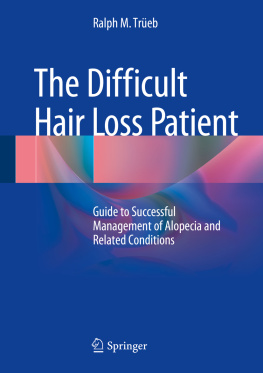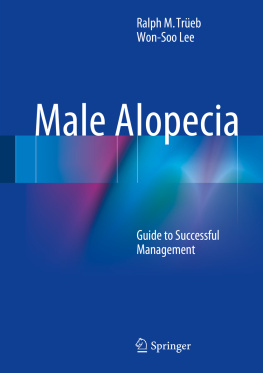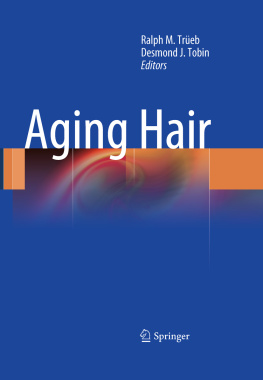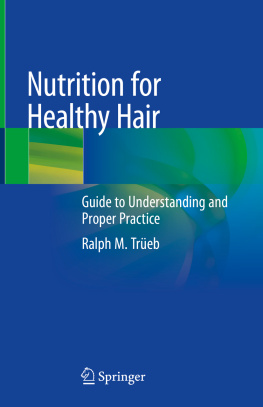1. Introduction: Defining the Difficult Hair Loss Patient
Hair Peace, John Lennon and Yoko Ono, Amsterdam, 1969, B/W photo (by Nico Koster, Center for Dermatology and Hair Diseases Professor Treb)
There are three secrets to managing.The first secret is have patience.The second is be patient.
And the third most important secret is patience.Chuck Tanner (19282011)
The difficult patient can be defined as one who impedes the clinician's ability to establish a therapeutic relationship. Data from physician surveys suggest that nearly one out of six outpatient visits are considered difficult.
The recent past has seen an increase in study of the difficult patient, with the literature warning against viewing the patient as the only cause of the problem. It suggests, rather, that the clinicianpatient relationship constitutes the proper focus for understanding and managing difficult patient encounters. Therefore, communication between clinicians and patients is a key factor in understanding and caring for patients who are perceived to be difficult.
Probably the most frequent cause for difficult patient encounters are prior negative patient experiences with physicians; others are specific psychopathological disorders related to the somatic complaint that again have to be identified as such.
Prerequisites for a successful management of hair loss are twofold: on the technical and on the psychological level.
On the technical level , prerequisites for success are a specific diagnosis, a profound understanding of the underlying pathophysiology, the best available evidence gained from the scientific method for clinical decision making, and regular follow-up of the patient combining standardized global photographic assessments and epiluminiscence microscopic photography with or without computer-assisted image analysis.
With respect to the diagnosis, one must remain open minded for the possibility of a multitude of cause relationships underlying hair loss and therefore also for the possibility of combined treatments and multitargeted approaches to hair loss.
Ultimately, evidence-based medicine (EBM) guidelines do not remove the problem of extrapolation to different populations or longer time frames. Even if several top-quality studies are available, questions always remain about how far, and to which populations, their results may be generalized. Certain groups have been historically under-researched, such as special age groups, ethnic minorities, and people with comorbid conditions, and thus the literature is sparse in areas that do not allow for generalizing. EBM applies to groups of people, but this does not preclude clinicians from using their personal experience in deciding how to treat each patient.
Therefore, good medical practice (GMP) means integrating individual clinical expertise with the best available external evidence from EBM.
On the psychological level , for a successful encounter at an office visit, one must be sure that the patient's key concerns have been directly and specifically solicited and addressed: acknowledge the patients perspective on the hair loss problem, explore the patients expectations from treatment, and educate the patient into the basics of the hair cycle and why patience is required for effective cosmetic recovery. One must recognize the psychological impact of hair loss.
Physicians should recognize that alopecia goes well beyond the simple physical aspects of hair loss. Patients psychological reactions to hair loss are less related to physicians ratings than to patients own perceptions.
Some patients have difficulties adjusting to hair loss. The best way to alleviate the emotional distress is to eliminate the hair disorder that is causing it. Only a minority of patients suffer from true imaginary hair loss. These have varied underlying mental disorders ranging from overvalued ideas to delusional disorder. In these cases, one must aim at making a specific psychopathological diagnosis.
Communication is an important part of patient care and has a significant impact on the patients well-being. Successful communication is the main reason for patient satisfaction and treatment success, while failed communication is the main reason for patient dissatisfaction, irrespective of treatment success.
Communication skills require a genuine interest in the problem of hair loss on the technical level and a genuine interest in the patient on the psychological level.
In almost any subject, your passion for the subject will save you. To succeed, you need the qualities that are essential in any endeavor: desire amounting to enthusiasm, persistence to overcome all obstacles, and the self-assurance to believe you will succeed. At the same time, try your best to develop the ability to let your patients feel into your head and heart.
2. Prerequisites for Successful Management of Hair Loss
Try not to become a man of success, but rather try to become a man of value.
Albert Einstein (18791955)
As with any medical problem, the patient complaining of hair loss requires a comprehensive medical and drug history, physical examination of the hair and scalp, and appropriate laboratory evaluation to identify the cause. The clinician also has a host of diagnostic techniques that enable classification of the patients disorder as a shedding disorder or a decreased density disease and documentation of true pathology or only perceived pathology.
Prerequisite for delivering appropriate patient care is an understanding of the underlying pathologic dynamics of hair loss and a potential multitude of cause relationships. By approaching the hair loss patient in a methodical way, commencing with the simplest and easiest to recognize objects, and ascending step by step to the knowledge of the more complex, an individualized treatment plan can be designed.
It must be borne in mind that hair loss often does not result from a single cause effect, but from a combination of factors that all need to be addressed simultaneously for success. Therefore, it is wise to divide each of the difficulties under examination into as many parts as possible, and as might be necessary for its adequate solution, and finally to make enumerations so complete and reviews so general, so that nothing is omitted that might compromise success. For this purpose it is advisable to design a hair database sheet that enables a complete record of collected data.
2.1 Patient History
History taking is of paramount importance in assessing hair loss. By careful and systematic questioning, it is possible to assess the factors pertinent to differential diagnosis and particular lines of further investigation.
In the course of history taking, it is advisable never to accept anything for true, neither from the patient nor from the referring physician, which is not clearly recognizable as such, that is to say, carefully to avoid precipitancy and prejudice and to comprise nothing more in ones judgment than what is presented to the mind so clearly and distinctly as to exclude all grounds of doubt.











